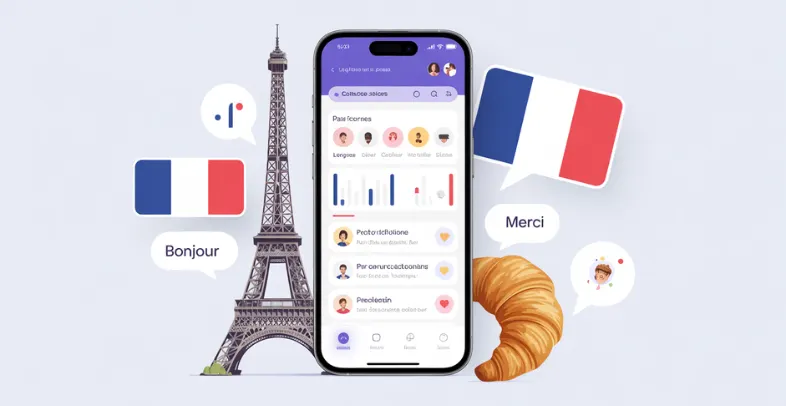So, you’re a web developer. You’ve mastered HTML, CSS, and JavaScript. You’ve built responsive websites and maybe even worked with a front-end framework like Angular or React. But now, you’re looking at the world of mobile apps and thinking, “How do I get in on that?” This is where Ionic comes in. It’s a fantastic, open-source tool that lets you use your existing web skills to build beautiful, cross-platform mobile apps.
Think of it as a bridge that takes everything you already know and makes it work on both iOS and Android. Suppose you’re looking to find Ionic developers for hire or explore what’s possible with a skilled Ionic app development company. In that case, this guide will set the foundation by helping you understand exactly what the framework is and why it’s such a game-changer. Our goal is to demystify the mobile app development process and show you that it’s not as intimidating as it seems.
What is Ionic and Why Should You Care?

At its heart, Ionic is a robust framework for building hybrid mobile applications. A hybrid app isn’t a native app (built specifically for iOS or Android) or a mobile website. Instead, it’s a web application, written with standard web technologies, that’s wrapped inside a native shell. Like many powerful mobile app development tools, the key benefit is this: you write once, run anywhere. You develop a single codebase that can be deployed to both the Apple App Store and the Google Play Store.
It’s a remarkable efficiency gain, eliminating the need to learn two completely different programming languages and codebases. This means faster development cycles and a significantly lower barrier to entry for any web developer dreaming of creating their own app. When you hire dedicated Ionic app developers, you’re investing in a professional who can deliver an application that works on multiple platforms with one set of code.
The Building Blocks: How Ionic Works
Ionic’s magic lies in its clever combination of different technologies. It’s not just one thing; it’s an entire ecosystem that works in harmony. At its core, Ionic relies on a popular JavaScript framework to handle the app’s logic. It gives you the flexibility to choose between Angular, React, or Vue. This choice allows you to use the framework you’re most comfortable with. Then, to get your web app to interact with a device’s native features—like the camera, contacts, or GPS—Ionic uses a native wrapper.
Historically, this was Apache Cordova, but now it’s primarily been superseded by Capacitor. A capacitor is a modern tool that provides a consistent API, allowing your web code to call native device APIs. It’s the essential component that makes a web app feel and function like a proper native application. If you’re looking to hire an Ionic app developer, you’ll want to find someone who understands this core architecture.
Getting Started: Prerequisites and Setup

Ready to get your hands dirty? Before you can start building with Ionic, you’ll need to make sure you have a few things set up. Think of these as your basic tools. You don’t need to be an expert in any of them, but having a fundamental grasp of each will make the learning curve much smoother. This is the simple roadmap to your first project.
- A solid understanding of HTML, CSS, and JavaScript. This is your foundation.
- Familiarity with a JavaScript framework like Angular, React, or Vue. You’ll build your Ionic apps with one of these.
- A code editor, like VS Code, is the most popular choice for web development.
- Node.js and npm (Node Package Manager) are installed on your machine.
- The Ionic CLI (Command Line Interface), which you install via npm, is your primary tool for creating, building, and running apps.
If you are a business owner looking for someone with these skills, consider hiring an ionic developer who already has a firm grasp on all of these tools and concepts.
Key Features That Make Ionic Powerful
So, why choose Ionic over the countless other frameworks out there? Beyond the efficiency of a single codebase, Ionic comes packed with features designed to make your life easier and your apps look fantastic. It’s not about reinventing the wheel; it’s about giving you a beautifully crafted set of tools. When you hire an Ionic framework developer, you’re tapping into someone who can leverage these powerful features to get your app to market faster.
The Component Library
This is, without a doubt, one of Ionic’s best assets. The framework boasts a comprehensive library of pre-built UI components—everything from buttons and cards to complex navigation menus and forms. These components are meticulously designed to adapt to the native styling of the platform automatically.
So, a button will look like an iOS button on an iPhone and an Android button on a Samsung device, without you having to write any extra code. This saves you an incredible amount of time and effort while ensuring a polished, professional look and feel for your app. The ability to use these components is a significant reason why companies seek out ionic app development services.
Ionic in Action: A Simple Workflow
What does a typical Ionic development cycle actually look like? It’s surprisingly simple and very familiar to a web developer. First, you’ll use the Ionic CLI to create a new project with a simple command. This command sets up all the files and folders you need, including a basic template. Once the project is created, you can run a development server with another simple command.
This allows you to see your app running live in your browser, where you can make changes and see them instantly. It’s a fast feedback loop. When you’re ready to test on a real device, the CLI makes that a breeze. The final step is building the app for a native platform and preparing it for submission to the App Stores.
Ionic vs. The Competition: A Quick Look
It’s a crowded marketplace out there, with major players like React Native and Flutter often dominating the conversation. So where does Ionic stand? While React Native and Flutter frequently offer a slightly deeper level of native performance, especially for graphically intensive apps, Ionic’s strength lies in its approachability for web developers. You don’t need to learn a new language like Dart (Flutter) or a new flavor of JavaScript (React Native).
You can use your existing skills with HTML and CSS, and that makes a massive difference. For most business applications, internal tools, or prototypes, the performance difference is negligible, and Ionic’s time-to-market advantage is a huge win. When you hire an Ionic app developer, they can leverage their existing skills to get the job done quickly.
Everyday Use Cases for Ionic
Because of its flexibility and speed, Ionic is an excellent choice for a wide range of projects. It’s not the best fit for something like a graphically intensive video game, but for most other apps, it works wonderfully. For example, it’s a perfect tool for building internal business apps, where a company needs to get a functional tool in the hands of employees quickly.
It’s also ideal for creating prototypes and MVPs (Minimum Viable Products) to test a new idea. You can build a polished, functional version of your app and put it on the app stores to gather user feedback without a considerable investment. If you want to make an educational app or a simple consumer-facing app, Ionic is a fantastic and efficient choice. It’s a pragmatic tool for anyone who wants to deliver a mobile experience without the traditional overhead.
Conclusion
So, what should you take away from this guide? Ionic is a powerful, accessible, and highly efficient framework that bridges the gap between web and mobile development. It empowers you to create real, polished applications for both iOS and Android using the skills you already possess.
By leveraging its component library, a modern native wrapper, and a single codebase, you can save significant time and resources. For any company considering working with an Ionic app development company, understanding this framework is the first step toward making a wise, strategic decision. It’s not just a tool; it’s a pathway to bringing your ideas to life on mobile devices with remarkable speed and simplicity.



